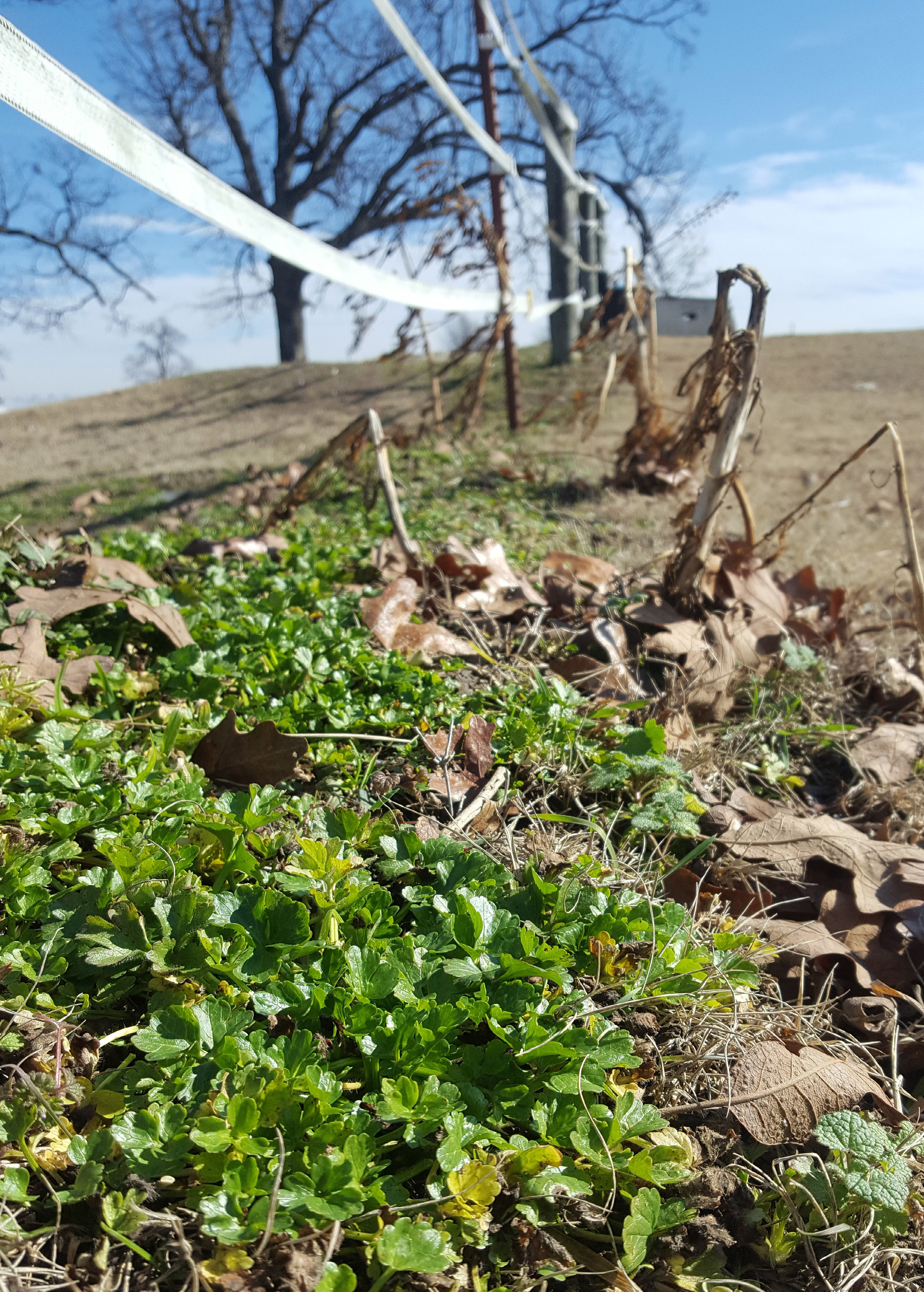Early weed control pays off
By the U of A System Division of Agriculture
Feb. 3, 2017
Fast facts:
- Winter is weed control time
- Buttercup, henbit compete with forage for water, nutrients
(380 words)
(Newsrooms: with photos at www.flickr.com/photos/uacescomm/32627369536, www.flickr.com/photos/uacescomm/32627369646)
FAYETTEVILLE, Ark. – Managing weeds to prevent them from competing with forage for water and nutrients is even more important at the time when about half of Arkansas is in drought.

“Winter is weed control time,” said Dirk Philipp, associate professor-animal science for the university of Arkansas System Division of Agriculture. “It is possible, unless it’s freezing, for weeds to be sprayed to clean up perennial warm and cool season pastures with herbicides so you have a clean start into the grazing season.”
Two of the most common weeds are buttercup and henbit. Buttercup is recognizable by its yellow flowers in late spring, but it’s often in the fields year-round. Henbit is an annual recognizable by its dark green leaves and small purples flowers.
“Both weeds will compete for nutrients and water resources at substantial levels if not kept in check,” he said.
At the end of January, about 51 percent of the state had some sort of drought rating, with 12.5 percent of the rated in severe drought and just over 2 percent rated in extreme drought. The most intense drought was in Crawford, Sebastian and Franklin counties.
“Buttercup species can be either annual or perennial and can be toxic to livestock,” he said. “However, because of its taste, is usually left alone by animals.
“Henbit is a low-growing weed and may seem to ‘hide’ among the fescue,” Philipp said.
In managing pasture weeds, producers shouldn’t wait to they grow large enough to become an “obvious nuisance.”
Philipp said henbit should be treated between mid-December and late February; buttercup in late February, before it flowers.
Since they can appear in fescue, which is green in winter, and bermudagrass, which is dormant during the winter, here are some quick pointers:
- In bermudagrass, use metsulfuron-containing herbicides for henbit and buttercup; for buttercup alone glyphosate will work.
- Since fescue doesn’t go dormant in winter, don’t use glyphosate. Instead, use 2,4 D amine products or metsulfuron-containing products.
A good offense -- planning ahead by optimizing pasture management -- is the best defense against weed encroachment,” Philipp said.
To learn more about pasture management, contact your county extension agent or visit uaex.uada.edu, for publications such as “Pasture Weed Control in Arkansas,” http://www.uaex.uada.edu/publications/pdf/mp522.pdf and www.uaex.uada.edu/publications/pdf/mp530.pdf, “Drought Management and Recovery for Livestock Systems.”
Pursuant to 7 CFR § 15.3, the University of Arkansas System Division of Agriculture offers all its Extension and Research programs and services (including employment) without regard to race, color, sex, national origin, religion, age, disability, marital or veteran status, genetic information, sexual preference, pregnancy or any other legally protected status, and is an equal opportunity institution.
# # #
By Mary Hightower
The Cooperative Extension Service
U of A System Division of Agriculture
Media Contact: Mary Hightower
Dir. of Communication Services
U of A Division of Agriculture
Cooperative Extension Service
(501) 671-2126
mhightower@uada.edu
Related Links